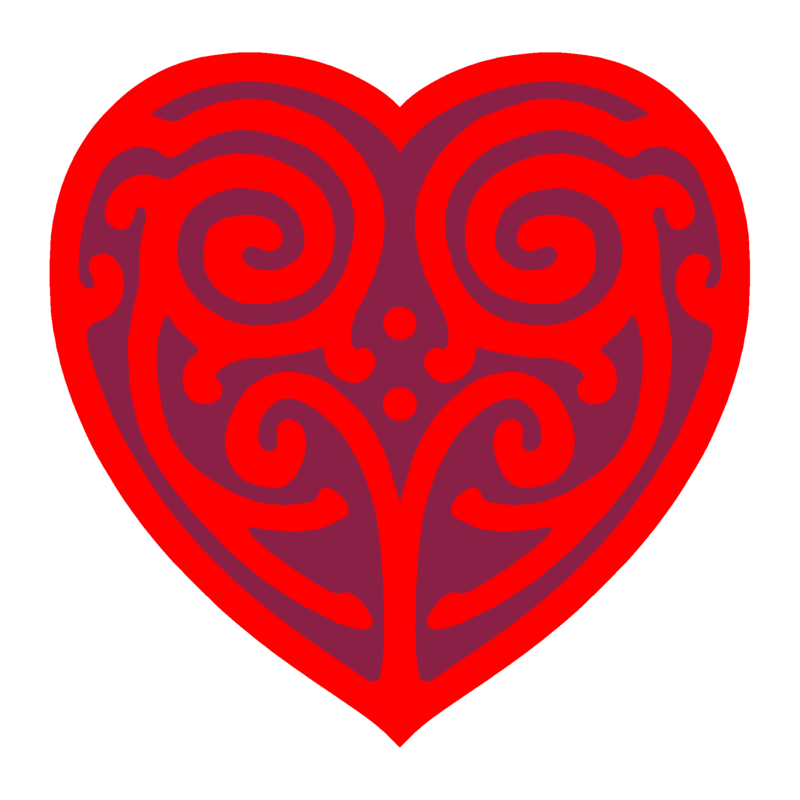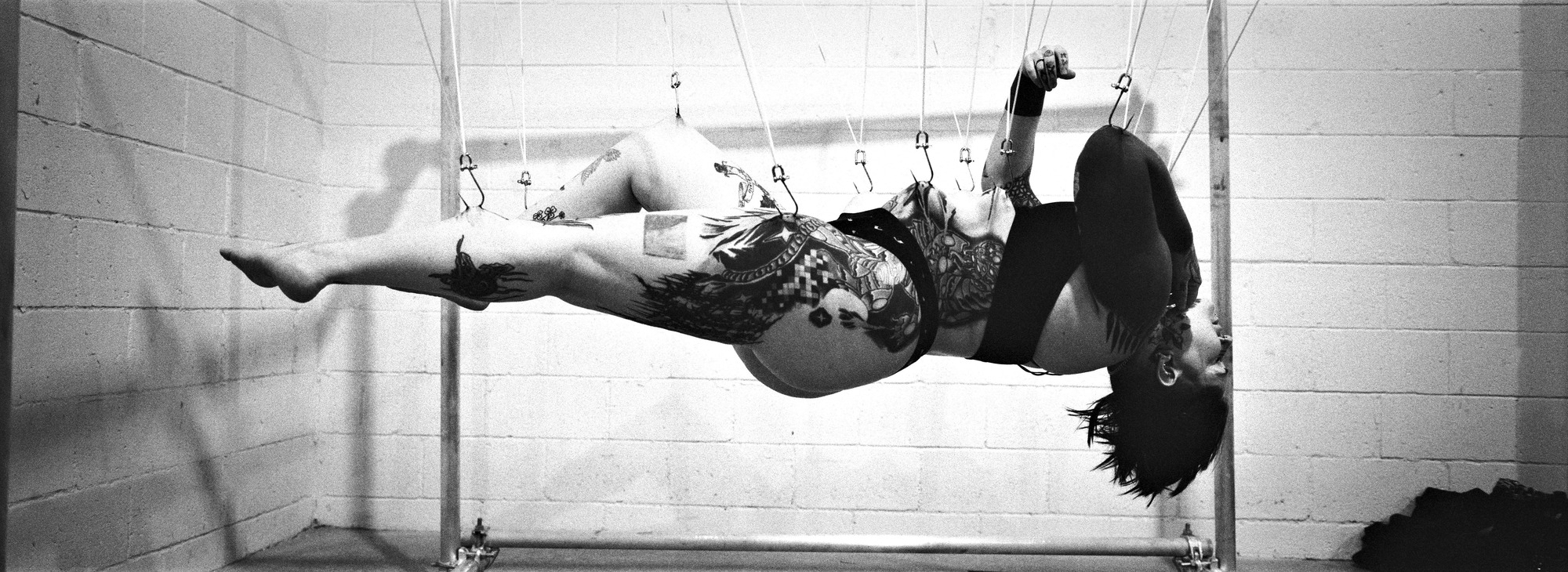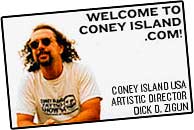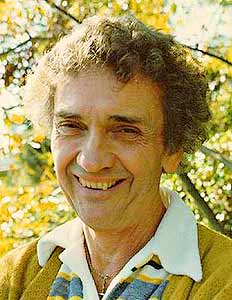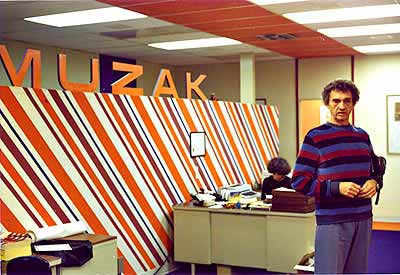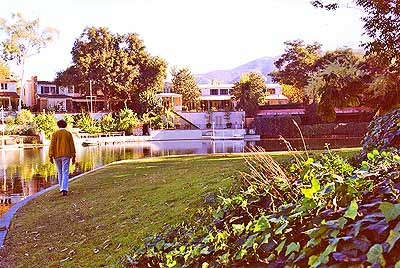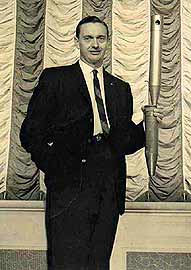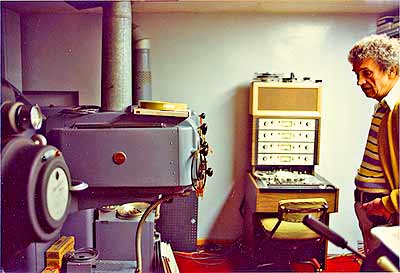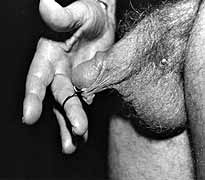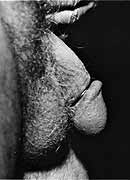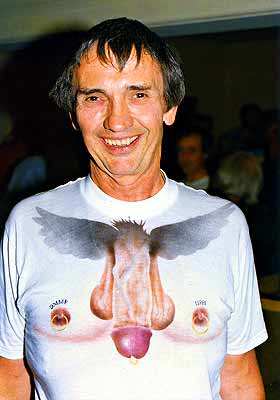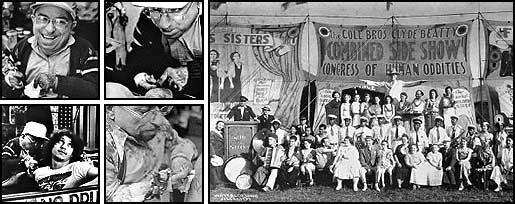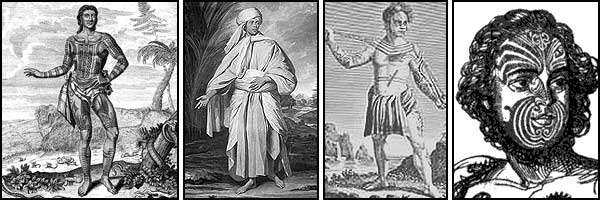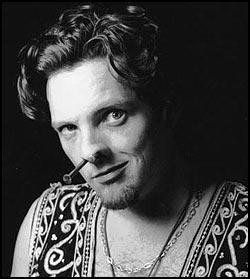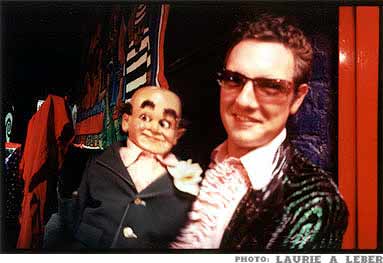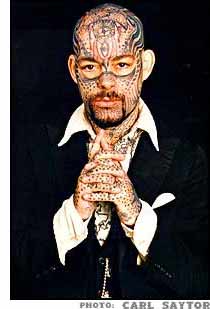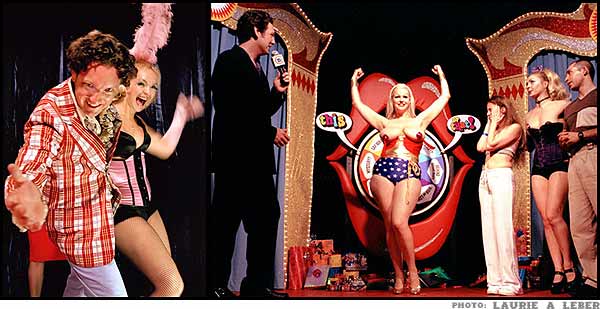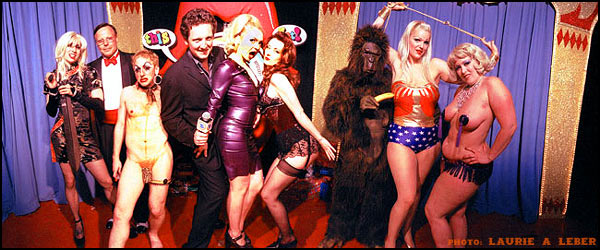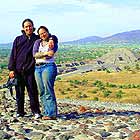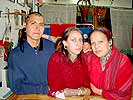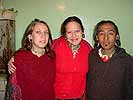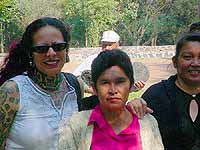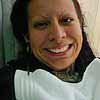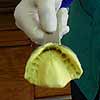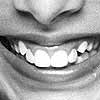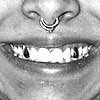
NOTE: If you’re reading this on Wednesday, March 17th, then you can |
“Whatever you do, do it with all your might. Work at it, early and late, in season and out of season, not leaving a stone unturned, and never deferring for a single hour that which can be done just as well now.”
– P.T. Barnum

Dick Zigun is the man. No, not that man, not the one that’s been holding you down all these years. He’s the good kind. Dick is the driving, some might say whip-cracking, force that helps keeps sideshow alive at Coney Island. He is an ever present icon at Sideshows by the Seashore overseeing daily operations and even taking part in the cast when needed as a talker. If you’ve caught any of the many sideshow documentaries and programs that have often graced basic cable networks such as Discovery and TLC in the last half dozen years then you have likely seen Dick acting as spokesman for Coney Island — and he is eminently qualified to do so.
I first met Dick Zigun when I did a guest appearance at Coney Island in 2002. And, at the risk of tarnishing his otherwise gruff reputation, I have to say that what impressed me most was how incredibly welcome he made me feel. Talking with Dick and working with his cast, I had never before felt so good and reassured about myself and the path I had chosen.
But, I don’t want to risk ruining his reputation any further, so let’s meet Dick Zigun!
| THE LIZARDMAN: |
Beginning with the usual interview formalities…
|
| DICK ZIGUN: |
I am founder and Artistic Director of Coney Island, USA, a non-profit arts organization dating from 1980 whose purpose “is to defend the honor of American popular culture through innovative performances and exhibitions.”
I was born May 11, 1953 in Bridgeport, CT. PT Barnum was mayor, developer, and patron saint of Bridgeport. He built his houses there and had the winter headquarters of the circus there. He bought up the shorefront (which was the front yard of his second house) and left that property and others to the city for parks. There is a big beach with a statue of Barnum. To grow up in Bridgeport is to think that elephants and midgets are patriotic and all-American. During the big Barnum Festival each summer (month long, largest 4th of July parade in USA during the 1950’s, car show, air show, 5th graders impersonating midgets, etc.) the local paper is full of biographical info on Barnum and Tom Thumb, who was born and lived a few doors from my grammar school. I was a Barnum scholar before I was a teenager. |
| THE LIZARDMAN: |
You have an impressive pedigree academically and professionally (Bennington, Yale) and many notable connections in the art world — so why sideshow?
|
| DICK ZIGUN: |
As a Bridgeport guy out to defend American theatrical traditions I was an oddball, a rebel, and a pioneer. I was writing plays about ventriloquists wanting to kill Thomas Edison — things like that. Right out of Yale School of Drama I was produced in the regional theater movement I had been trained for but not happy typecast as an edgy experimental playwright doomed forever to producing new plays in regional theater second spaces for the hoity-toity blue haired ladies. In 1979 I was having a play produced at the Mark Taper Forum in LA… grooving on the beach and thinking that LA was the capital of America… but set on living in New York City which is the capital of the world and the only place someone serious about theater can earn a living. Another play being produced at the same time in LA was KID TWIST by Len Jenkin about the Murder Inc. stool pigeon thrown out the hotel window in Coney Island. I went back again and again to see the play and Coney Island intellectually struck me as a way to live the beach lifestyle in NYC. Then I was visiting the Santa Monica pier and epiphany struck when I saw an arcade building for rent. I vowed to go back to Coney Island and check out loft space. One thing lead to another and by 1985 I opened a theater/arts center on the Boardwalk called Sideshows by the Seashore. Sideshows are the most indigenous theatrical tradition in my chosen neighborhood so it was only natural to create a program where we would be the only place left in America to keep alive the ten-in-one. |
| THE LIZARDMAN: |
You are noticeably tattooed (your sleeves) with work by notable artists – tell us about your tattoo work and the artists responsible.
|
| DICK ZIGUN: |
Running an arts center has given me the opportunity to bring a lot of American underground culture into the mainstream by virtue of being a known arts center in NYC that sends out press releases, puts on public advertised shows, and organizes artists to present things. We not only pioneered the new sideshow movement but also helped to create the new burlesque movement, and within NYC (which tattooing was illegal in and no one was producing an annual tattoo show) helped to bring tattoos out of the underground.
Our first tattoo/motorcycle show was in 1986. I was producing a tattoo show, hanging out with tattooed people, making money off of tattooed people, and was good friends with Michael Wilson… I thought long and hard for ten years about myself and whether I would spend my life employing freaky people but remaining a standoffish academic type. So in 1996, after ten years of over-intellectualizing, I came up with this: four limbs equals: earth, water, fire, air. I got my first tattoo, on stage, in the street, in front of the police captain when tattooing was still illegal in NYC and everyone could hear me scream. Spider Webb tattooed my right arm which is “water”. Camille Cline, spider’s protégé, did my left arm which is air. Dragonfly, another spider protégé, is working on my right leg which is fire. That’s as far as I’ve gotten. |
| THE LIZARDMAN: |
At what point did you begin getting tattooed in relation to your association with sideshow?
|
| DICK ZIGUN: |
Michael Wilson, with his debut in Modern Primitives, had a lot to do with introducing post-modern tattoos and piercings to America. When Michael first worked here no one since Jack Dracula had publicly exhibited a tattoo face… some 20-25 years. It was a big deal and since pierced tongues were also unusual in the 1980’s it was a big deal when Michael would hammer a nail thru his tongue. Now every suburban teenage girl in American has a pierced tongue.
When I first came to Coney Island I was an outsider artist type and my education and non-Brooklyn accent enamored me to the locals as a spokesman for Coney. It would have been difficult back then if I was heavily tattooed but now I’ve become some kind of Coney Island institution and as long as I stay alive and articulate it doesn’t matter much what I do… well, maybe it would matter if I tattooed my face. |
| THE LIZARDMAN: |
You have known and worked with a number of people who were heavily tattooed (including probably more facially tattooed modern performers than anyone else). Has this changed your perception of tattooing, or facial tattooing? Ever considered going that route yourself?
|
| DICK ZIGUN: |
Knowing and loving and respecting so many heavily tattooed people helped me accept the idea of inking myself. I can see myself with a total bodysuit but not facial or hand tattoos. I am an old-style kind of guy. My job is to be the producer and director and spokesman. I am not one of the performers. Since I am always hanging around the place my tattooed sleeves help in that I am another freaky looking staff person. But as a spokesman it is best that the audience more or less identify with me as one of them and not one of the extreme freaks.
|
| THE LIZARDMAN: |
Do you think that sideshow has helped or hindered the popular view of heavily modified people (such as those with facial tattooing)?
|
| DICK ZIGUN: |
Without question the sideshow movement has helped the popular view of heavily modified people. A few decades ago a Michael Wilson or Lizardman or Enigma would have been stoned walking down the average small town American street… now you all are famous TV celebrities.
|
| THE LIZARDMAN: |
What societal role do you see sideshow playing in the future? What does it provide?
|
| DICK ZIGUN: |
Sideshows have reintegrated themselves into American culture. You see sideshow influence in rock videos, in advertising, in fashion. I am proud to have a role in moving sideshow culture from the margins back into the mainstream, where it belongs. America used to have an inferiority complex about its own culture: sideshows, burlesque, vaudeville.
We used to be embarrassed not proud of our populist culture. Everything used to be Eurocentric and that was boring and elitist. Artists especially are now free to use American culture as history and influence without freaking out their professors or getting kicked out of school, galleries, and museums. Nevertheless, not I nor Jim Rose nor the Bindlestiffs have made big money out of producing sideshows. It only goes so far. I’d like to see it go farther and I’d like to see sideshows make more money — especially since we need to institutionalize the arts center in Coney Island, now that Coney Island is developing fast and taking off. We are renters and not owners and our lease in up in two years. We need to fund this place and the history that has taken place here since the 1980’s or else we will lose it. |
| THE LIZARDMAN: |
Coney Island now offers a sideshow school — tell us about that.
|
| DICK ZIGUN: |
Of course there is a lot of interest in sideshow acts by a new generation of circus idiots for the 21st century… and there is a lot of bad info out there in books and on websites about how to learn and master the sideshow arts which are dangerous!!! So since we are a non-profit educational institution we decided we would be the very first school which taught the arts the right way.
It helps us earn money for our programs and it helps eager sideshow amateurs learn how to stay out of the hospital. |
| THE LIZARDMAN: |
With over two decades experience you have been working the sideshow longer than many of its current fans and hopeful future stars have been alive. What would you suggest they consider or do before taking their first steps or preparatory measures before beginning training at the school or elsewhere?
|
| DICK ZIGUN: |
I am amazed how casually some people tattoo their faces or do extreme body modification these days. Used to be that someone would get a tattooed bodysuit first and then consider the face but these days some kids start with the face.
Frankly, although a lot of brilliant committed people get facial tattoos, a lot of others are “no future” crusty heroin junky types who just don’t care about next year or even what tomorrow brings. Fine if that’s your chosen lifestyle, fine but sad… but if you’re gonna be a professional in a sideshow then you need to show up for work on time every day and act sober — junkies don’t get jobs on payroll at Sideshows by the Seashore. |
| THE LIZARDMAN: |
Given your experiences would you recommend others attempt a similar path?
|
| DICK ZIGUN: |
If it is a “labor of love” and you just gotta do it, then sure, I’ll not only recommend it but be your mentor and give you advice (up to a point; don’t need more competitors). Ain’t no one gonna get rich doing sideshows and the trials and tribulations will mess with your family life and love life and make your life hard but very, very interesting.
|
| THE LIZARDMAN: |
What does the word ‘freak’ mean to you?
|
| DICK ZIGUN: |
Freak used to be a pejorative, a bad word. Now it’s a badge of honor. People wanna be a freak. Freaks have freedom; freaks are not like everyone else. Freaks are cool.
|
| THE LIZARDMAN: |
Is there any act that you have always wanted for the show but never got?
|
| DICK ZIGUN: |
Siamese Twins. A perfectly proportioned 3 foot high midget. A 9 foot tall giant. The real missing link. Hell, even a sideshow celeb like the Lizardman working for me at minimum wage for an entire summer. I better keep dreaming…
|
| THE LIZARDMAN: |
Say whatever you want.
|
| DICK ZIGUN: |

because the world NEEDS freaks… Former doctoral candidate and philosophy degree holder Erik Sprague, the Lizardman (iam), is known around the world for his amazing transformation from man to lizard as well as his modern sideshow performance art. Need I say more? Copyright © 2004 BMEzine.com LLC. Requests to republish must be confirmed in writing. For bibliographical purposes this article was first published March 17th, 2004 by BMEzine.com LLC in Toronto, Ontario, Canada.
|
